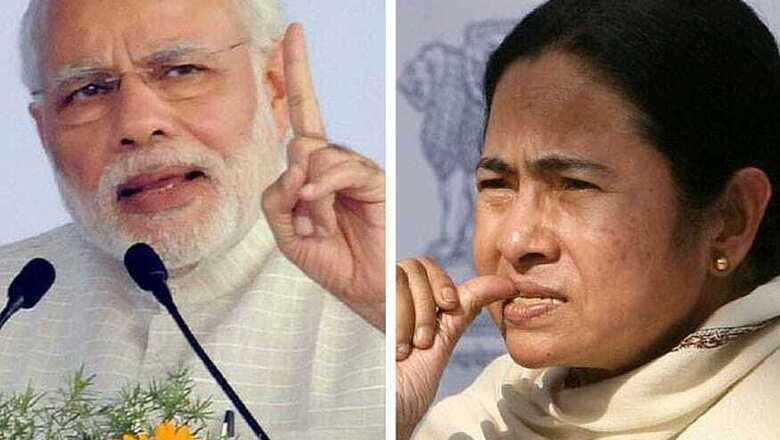
views
Kolkata: When BJP president Amit Shah had announced, over a year ago, that the saffron party would look to capture at least 20 seats in West Bengal, the Trinamool Congress leadership had scoffed. As election results pour in, it is becoming increasingly evident that the BJP is not just the prime opposition in the state — but also a serious challenger for West Bengal chief minister Mamata Banerjee.
The reasons for BJP's incredible success rests on three factors: their utilisation of Hindutva as a political force against Mamata Banerjee's alleged Muslim appeasement, the opposition vacuum that had plagued the state since almost immediately after Banerjee's 2011 victory and WhatsApp as a method to counter the TMC's much-discussed "election machinery".BJP's relentless Hindutva campaign
The CPI(M) had often cited the three decades of Left Front rule as evidence that Hindutva is antithetical to Bengal, that under its rule ideology had trumped identity. But the state polls saw that this was simply not true. As it went for polls, political conversations from Contai to Cooch Behar, from Darjeeling to Diamond Harbour were eventually whittled down to the binary of Mamata versus Modi, Hindu versus Muslim. Its relentless campaign of Hindutva has allowed them to gain traction in the state where Muslim-Hindu relations have seen both conflict and cohabitation, said the BJP.
In Purulia for instance, for the first time, in its history, the Trinamool Congress (TMC) organised a Ram Navami Rally in Purulia town, a day after the one that the Bajrang Dal organised for the third year in a row. Like Asansol, Durgapur and West Burdwana, Purulia also has a cultural similarity to adjacent Jharkhand and Bengal and celebrate many of the same festivals. A BJP leader explained, "The BJP gained rapid ground here because people wanted an option. Hindutva was something that had an instant connection with people...it allowed us to reach out to voters who never really believed in the ideology of the Left or TMC...but would vote for them nonetheless."Left left for dead
That the Left in Bengal was left with no seats, during counting, is something that many voters in Bengal predicted. But a senior CPI(M) leader told News18.com, "This is something that the TMC has itself to blame. It attacked the CPI(M) after coming in power. It arrested our cadres and destroyed our offices." The leader added that "it was only after a matter of time before the BJP's communal forces took up that space". The BJP exploited this, focusing its efforts on seats that were former strongholds of the CPI(M)'s smaller constituent.
While TMC leaders admit that its "tactic" against the Left had possibly backfired, they also added that a singificant portion of Left voters, especially in rural areas, were actively "asked to vote for the BJP". The leader said, "There was a time when the Left would want the Congress vote to be high...now we were hoping that the Left vote share would be significant. But this wasn't the case."WhatsApp versus 'Election Management'
Since her first electoral victory in 1984, West Bengal CM Mamata Banerjee would write, and rewrite opposition politics in the state. “Vitriol and tenacity, matched with an acute understanding of her party’s own weaknesses when faced with a behemoth,” described one leader in her election management committee. As the state goes to polls again in 2019, things are different. In power, it is Banerjee who is fending off an ascending BJP, armed with her own playbook. Nowhere is that more apparent than in their use of Banerjee’s iconic slogan against the CPI(M): ‘Chupchap, phoole chhap’. (Quietly vote for the flower).
There were two flowers in Bengal. The BJP’s Lotus, albeit more prominent than ever before and the TMC’s ghas phool (grass flower). While BJP urged voters to vote ‘silently’, to keep their allegiances to themselves, its campaign over WhatsApp was much larger. A BJP IT cell leader from Howrah told News18.com, "We knew that we couldn't match up to the TMC's organisation capacity that would look to cajole or intimidate voters. Instead, we got into their phones...and their homes and their heads. We argued our point when no one else was looking."



















Comments
0 comment